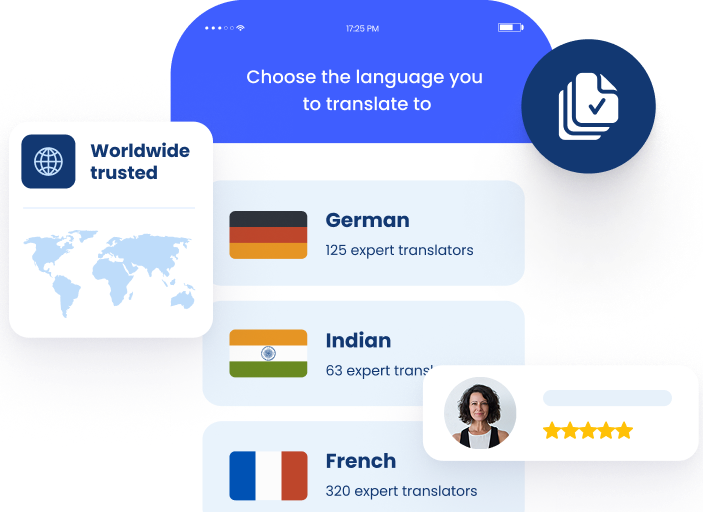Statistics from the NIH shows that roughly 15% of American adults report some degree of hearing difficulty. For organizations, this statistic translates into a significant compliance and operational challenge.
The Americans with Disabilities Act (ADA) obligates institutions to ensure effective communication with Deaf and hard-of-hearing individuals. Failure to do so can result in lawsuits, reputational damage, or worse, serious harm to those denied access to critical information.
The stakes extend far beyond legal exposure. Miscommunication can produce life-threatening errors in healthcare, educational inequities that persist for years, and systematic exclusion in the workplace.
This shows that, in high stakes industries, professional ASL interpreting is not an optional courtesy. This guide clarifies what professional ASL interpreting entails, why certification and ethics are central to quality, and how you can meet their obligations effectively.

What Does an ASL Interpreter Do?
An ASL interpreter is more than a bilingual employee. They are professional linguistic and cultural facilitators whose job is to ensure equal access for both Deaf and hearing participants. Their work is not limited to conveying words. They transmit meaning, tone, and intent across ASL and spoken English. An ASL interpreter is more like a diplomat in that they bridge linguistic and cultural gaps.
Crucially, interpreters are neutral. They serve every participant in the conversation, not just the Deaf individual. This neutrality distinguishes them from assistants or advocates. Interpreters employ two main modes, simultaneous and consecutive.
Simultaneous interpretation happens in real time, with the interpreter signing or voicing as the speaker continues. Consecutive interpretation requires pauses for the interpreter to render the message afterward. Simultaneous mode dominates ASL settings because of its efficiency and immediacy.

How interpreting differs from knowing ASL
Fluency in ASL is not the same as professional interpreting. A person who learned ASL through classes or family use does not automatically possess the skills required for high-stakes assignments.
The distinction parallels the difference between a bilingual individual and a trained United Nations interpreter. Interpreting demands additional mastery, including deep knowledge of Deaf and hearing cultures, command of specialized vocabulary, ethical discipline, and the cognitive stamina to switch languages under pressure.
The pathway to qualification reflects this rigor. Graduates typically require 19 to 24 months of post-graduate training to achieve national certification. This separates casual fluency from professional competence.
Why certification matters for interpreters
Certification provides organizations with a defensible benchmark of competence. The two main certifying bodies are the Registry of Interpreters for the Deaf (RID) and the Board for Evaluation of Interpreters (BEI). RID credentials, such as the National Interpreter Certification (NIC), are widely recognized as the gold standard.
Certified interpreters have proven their ability to perform across diverse assignments and adhere to ethical standards. For organizations, this translates to reduced risk of miscommunication in critical situations such as medical diagnoses or courtroom proceedings.
Legally, the ADA requires a “qualified interpreter,” and while it does not mandate a specific credential, national certification is the clearest evidence of meeting this standard. Many states further codify certification through licensure laws for schools and courts.
Ethics and confidentiality standards
Certified interpreters operate under the NAD-RID Code of Professional Conduct (CPC), which establishes seven tenets guiding practice. Confidentiality sits at the core. Interpreters must keep all information private, a necessity in healthcare under HIPAA and in sensitive legal contexts. Other principles include impartiality and professionalism.
Using uncertified individuals, including family members, undermines these safeguards. Without ethical training, confidentiality and impartiality can easily be compromised, exposing organizations to liability.
Challenges interpreters face
Interpreting is an intense profession, marked by cognitive, physical, and emotional strain. Studies show that after 30 minutes of continuous interpreting, accuracy begins to decline due to mental fatigue. This is why assignments longer than one hour require team interpreters.
Physical strain from repetitive signing can lead to cumulative trauma disorders such as Carpal Tunnel Syndrome. Interpreters also face vicarious trauma in medical, mental health, and legal settings, where they must render traumatic content in the first person.
In one survey, 83% of interpreters in mental health environments reported such trauma. These factors highlight why professional standards exist to safeguard both interpreters and communication quality.
When to Use an ASL Interpreter

Medical and healthcare visits
Healthcare providers are legally required under Title III of the ADA to provide qualified interpreters, at their own expense, for effective communication. The need is clearest in scenarios such as obtaining medical histories, delivering diagnoses, securing informed consent, and conducting therapy.
Failure to provide interpreters contributes directly to health disparities, with Deaf individuals experiencing higher rates of chronic illness and hospitalization. A 2022 study found that 41% of mental health facilities failed to provide ASL support.
HIPAA binds professional interpreters to confidentiality, offering legal protection absent when using friends or family as interpreters.
Legal cases and USCIS interviews
Courts, under Title II of the ADA, must provide qualified interpreters for parties, witnesses, and jurors. Federal cases are covered under the Court Interpreters Act. Specialized legal interpreters are necessary because of the complexity of legal terminology and the requirement for an accurate record.
In immigration contexts, applicants must often bring their own interpreters, except in naturalization interviews where English is tested. USCIS requires interpreters to be at least 18, impartial, and to sign Form G-1256 confirming their role. While family members may be accepted, officers can reject them for lack of competence or neutrality.
Schools, workplaces, and events
Educational institutions fall under Section 504 of the Rehabilitation Act, the ADA, and IDEA, all of which guarantee interpreting services for students and parents in academic and extracurricular activities.
Employers, under Title I of the ADA, must provide reasonable accommodations such as interpreters for job interviews, training, and reviews. Public events also require accessibility upon request, with proactive planning recommended for organizers.
Certified ASL Interpreter vs. Certified Deaf Interpreter
A Certified Deaf Interpreter (CDI) is a Deaf or hard-of-hearing professional certified by RID. Unlike hearing interpreters, CDIs bring native fluency and cultural insight to the process. They typically work in tandem with hearing interpreters, where the hearing interpreter renders spoken English into ASL, and the CDI adapts it for nuanced comprehension by the Deaf consumer.
Scenarios requiring CDIs include legal or medical cases where subtle differences matter, situations involving limited ASL proficiency or foreign signers, and when Deaf individuals prefer a CDI. Their ability to use gestures, visual aids, and cultural expertise ensures clarity where a standard interpreter may fall short.
How to Book an ASL Interpreter
Because there are only about 10,000 RID-certified interpreters in the United States, which is roughly one for every 50 Deaf ASL users, advance booking is critical. Organizations should request interpreters at least three to five business days before routine appointments, and earlier for complex events.
Most agencies impose a two-hour minimum booking and require two interpreters for assignments exceeding an hour. Cancellations usually need at least two days’ notice.
Questions to ask before booking
To ensure quality, organizations should ask agencies or interpreters about:
- Certification: Are they RID or BEI certified? Can credentials be verified?
- Experience: Do they specialize in medical, legal, or technical fields relevant to the assignment?
- Matching: How are interpreters paired with clients, and are Deaf consumer preferences considered?
- Policies: What are the rates, travel surcharges, team requirements, and cancellation terms?
Quality assurance: How does the agency monitor interpreter performance and solicit feedback?
ADA Requirements for ASL Interpreting Services
The ADA is a civil rights law mandating equal participation for people with disabilities. Its effective communication rules require organizations to provide auxiliary aids such as interpreters. Different titles apply to different contexts.
This means Title I for employers, Title II for public entities, and Title III for businesses serving the public. A “qualified interpreter” is defined as someone who can interpret effectively, accurately, and impartially, using necessary specialized vocabulary.
Organizations must cover costs and give primary consideration to the communication method requested by the individual. The only exceptions are interpreted narrowly and rarely exempt organizations from providing interpreters.

Hire Professional ASL Interpreters Today
Professional ASL interpreting is both a legal mandate and a strategic investment. Certified interpreters mitigate risk, guarantee accurate communication, and foster an inclusive culture. The distinction between casual ASL fluency and professional interpreting is crucial in the sense that only certified professionals bring the ethical grounding, specialized training, and resilience required.
If you want a reliable partner with nationwide reach, The Language Doctors offers access to certified interpreters across medical, legal, corporate, and educational settings. By working with a specialized provider like us, you ensure compliance, minimize risk, and secure the high-quality interpreting services needed to support equitable communication with the Deaf community.


